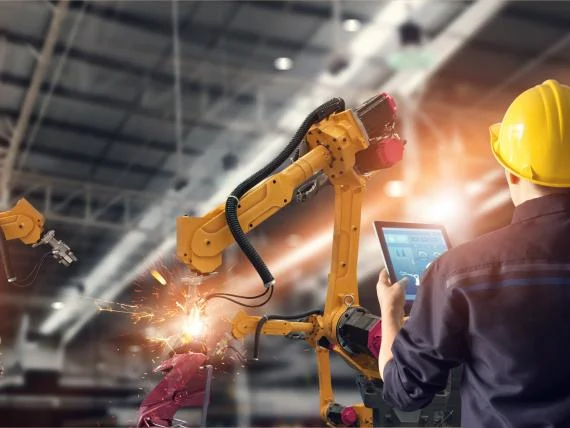

Robotics and autonomous systems (RAS) are programmable machines – often stand-alone- that can carry out complex tasks with a high degree of autonomy they are expected to have a major impact on most economic sectors in the next 10 years.

The technology continues to develop into many forms to address specific applications and common features include: processing software; sensors that collect data from the immediate surroundings; the ability to move both themselves and objects; the capacity to interface and interact; and increasingly, the ability to work alongside people without conventional physical safeguards being in place.
RAS (including drones and autonomous vehicles) are expected to have a major impact on most economic sectors in the next 10 years. This is due to the increased up-take, focussed application, improved effectiveness and market competition they have the potential to deliver. Implementation and adoption of RAS brings both disruption and innovation and key to their success is the translation of this into economic growth. Currently, the manufacturing, transport, logistics, agriculture, energy and healthcare sectors are leading the way.
Recent developments have produced various innovations including:
- High precision and dexterity, with soft, flexible grips.
- Bricklaying robots that can cut and lay up to 1000 bricks per hour.
- Remote and autonomous monitoring and sensing systems.
- ‘Chat-bots’ for use in the social care and healthcare sector.
- Increasingly, RAS are designed to interact with people to deliver direct benefits – such as supporting workers in performing manual tasks, by undertaking repetitive aspects or heavy lifting. Safety design features will firstly seek to avoid RAS coming into contact with people. Where this cannot be avoided, or where contact is required, to limit it to a safe level. Where RAS and people share the same workspace, the integrity of both health and safety-related control systems is of major importance.
- With their ability to monitor, sense and detect, RAS provide opportunities for remote inspection in hazardous environments. This may remove the need for work at height or at depth or to avoid exposure to radiation, heat or pressure. RAS can also monitor and control the workplace environment, providing protection from exposure to airborne hazardous substances that can cause occupational lung disease.
- Human perceptions of RAS, in respect of trust and ethics and the decisions RAS may make on our behalf, will be something that needs to be considered and addressed to enable this technology to be integrated into workplaces and deliver an autonomous future.
The way this technology is introduced can have a significant impact on its acceptance and the necessary trust created. The design and application of RAS must take account of ethical standards and safety design features. Ethical questions have broader implications due to the associated issues of fear and stress that working with, and alongside RAS, may bring.
HSE’s Foresight Centre chose the topics on the visible and emerging issues we observe through our routine horizon scanning activities. If you are interested in looking into the future of work and using collaborative futures techniques, such as workshops and scenario building, you can contact HSE’s Foresight Centre by emailing foresight.centre@hse.gov.uk
Related Content
